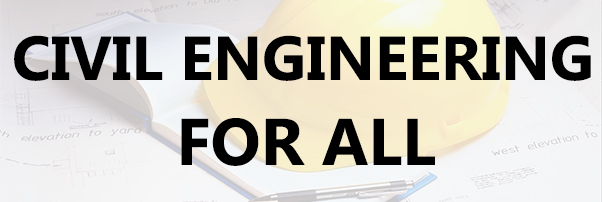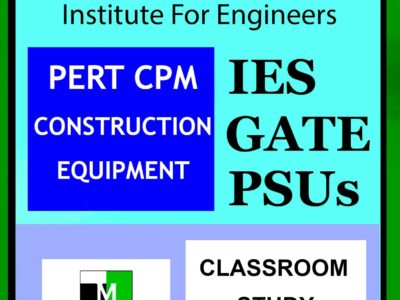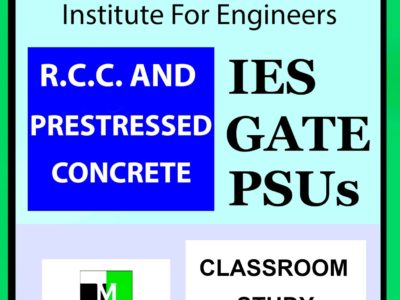IES MASTER GATE MATERIAL
STEEL STRUCTURES
GATE – PSU – IES – GOVT EXAMS – STUDY MATERIAL
FREE DOWNLOAD PDF
![[GATE - PSU - GOVT EXAMS] STEEL STRUCTURES IES MASTERS Study Material Main Page 1](https://civilenggforall.com/wp-content/uploads/2017/07/GATE-PSU-GOVT-EXAMS-STEEL-STRUCTURES-IES-MASTERS-Study-Material-Main-Page-1-225x300.jpeg)

CONTENTS
- General Design Requirements
- Connections
- Design of Tension Members
- Design of Compression Members
- Design of beams
- Design of Girders
- Design of Gantry Girders
ABOUT THE BOOK :
IES MASTER’S GATE MATERIAL IS USEFUL FOR NOT ONLY GATE ASPIRANTS BUT ALSO IES, PSU JOBS, GOVERNMENT JOBS AND MANY COMPETITIVE EXAMS. IES MASTERS IS ONE OF THE TOP MOST GATE COACHING INSTITUTES IN INDIA. A MUST HAVE BOOK FOR MAINLY GATE PREPARING CIVILIANS.
![[GATE - PSU - GOVT EXAMS] STEEL STRUCTURES IES MASTERS Study Material Screenshots 1](https://civilenggforall.com/wp-content/uploads/2017/07/GATE-PSU-GOVT-EXAMS-STEEL-STRUCTURES-IES-MASTERS-Study-Material-Screenshots-1-211x300.png)
DESIGN OBJECTIVE : The objective of design is the achievement of an acceptable probability that structures will perform satisfactorily for the intended purpose during the design life.With an appropriate degree of safety, they should sustain all the loads and deformations during construction and use and have adequate resistance to accidental loads and fire.
METHODS OF DESIGN : Structure and its elements shall normally be designed by limit state method as per ls 800-200m. Where the limit state method cannot be conveniently adopted working stress method shall be used. LOADS AND FORCES For the purpose of designing any element, member or a structure, the following loads and their effects shall be taken into account, where applicable; with partial safety factors and combinations Dead loads: b. Imposed loads: Liveload, crane load. snow load etc.) (c) Wind loads(d) Earthquake loads(e) Erection loads Accidental loads such as those due to blast g) Secondary effects due to contraction or expansion resulting from temperature changes, differential settlements of the structure as a whole or of its components, eccentric connections.
![[GATE - PSU - GOVT EXAMS] STEEL STRUCTURES IES MASTERS Study Material Screenshots 2](https://civilenggforall.com/wp-content/uploads/2017/07/GATE-PSU-GOVT-EXAMS-STEEL-STRUCTURES-IES-MASTERS-Study-Material-Screenshots-2-211x300.png)
100% CLASSIFICATION OF CROSS SECTIONS : Basis of Classification The plate elements of a cross-section may buckle locally due to compressive stresses. When plastic analysis is used, the members shall be capable of forming plastic hinges with sufficient rotation capacity(ductility) without local buckling to enable the redistribution of bending moment required before formation of failure mechanism When elastic analysis is tied, the member shall be capable of developing the yield stress under compression without local buckling On the above basis, four classes of sections are defined as follows(a) Plastic Cross-sections, which can develop plastic hinges and have the rotation capacity required for failure of the structure by formation of a plastic mechanism(b) Compact Cross sections, which can develop plastic moment of resistance, but have inadequate plastic hinge rotation capacity for formation of a plastic mechanism. (c) Semi-compact Cross-sections, in which the extreme fibre in compression can reach, yield stress, but cannot develop the plastic moment of resistance, due to local buckling(d) Slender Cross-sections
GENERAL DESIGN REQUREMENTS LIMIT STATE DESIGN OF STEEL STRUCTURES : Basis for Limit State Design In the limit state design method, the structure shall be designed to withstand safely all loads likely to act on it throughout its life. It shall also satisfy the serviceability requirements, such as limitations of deflection and vibrations and shall not collapse under accidental loads such as from explosions or impact or due to consequences of human error to an extent not originally expected to occur The acceptable limit for the safety and serviceability requirements before failure occurs is called a limit state. The objective of design is to achieve a structure that will not become unfit for use with an acceptable target reliability. In other words, the probability of a limit state being reached during its lifetime should be very low. In general, the structure shall be designed on the basis of the most critical limit state and shall be checked for other limit states In limit state design, structures are designed on the basis of safety against failure and are checked for serviceability requirements LIMIT STATE DESIGN limit states are the states beyond which the structure no longer satisfies the performance requirements
![[GATE - PSU - GOVT EXAMS] STEEL STRUCTURES IES MASTERS Study Material Screenshots 3](https://civilenggforall.com/wp-content/uploads/2017/07/GATE-PSU-GOVT-EXAMS-STEEL-STRUCTURES-IES-MASTERS-Study-Material-Screenshots-3-211x300.png)
LIMIT STATE DESIGN : Limit states are the states beyond which the structure no longer satisfies the performance requirements specified. The limit states are classified as: a) Limit State of Strength b Limit State of Serviceability Limit State of Strength The limit state of strength are those associated with failures(or imminent failure), under the action of probable and most unfavorable combination of loads on the structure. Limit State of Serviceability The limit state of serviceability includes: Deformations and deflections Vibrations Repairable damage due to fatigue Corrosion and durability The major innovation in the limit state method is the introduction of the partial safety factor format which essentially splits the factor of safety into two factors one for the material and one for the load. In accordance with these concepts, the safety forma limit state codes is based on probable maximum load and probable minimum strengths. So that a content level of safety is achieved
DOWNLOAD LINK : IES MASTER Steel Structures Study Material for GATE PSU IES GOVT EXAMS Free Download PDF
DISCLAIMER : THIS WEBSITE IS NOT THE ORIGINAL PUBLISHER OF THIS BOOK ON NET. THIS E-BOOK HAS BEEN COLLECTED FROM OTHER SITES ON INTERNET. ALL THE RIGHTS ON THIS BOOK BELONGS TO IES MASTER ACADEMY.

![[GATE - PSU - GOVT EXAMS] STEEL STRUCTURES IES MASTERS Study Material Main Page 1](https://civilenggforall.com/wp-content/uploads/2017/07/GATE-PSU-GOVT-EXAMS-STEEL-STRUCTURES-IES-MASTERS-Study-Material-Main-Page-1.jpeg)









![Structural Analysis - AE - AEE - Civil Engineering Handwritten Notes [CivilEnggForAll.com]](https://civilenggforall.com/wp-content/uploads/2017/10/Structural-Analysis-AE-AEE-Civil-Engineering-Handwritten-Notes-CivilEnggForAll.com_-400x300.jpg)









